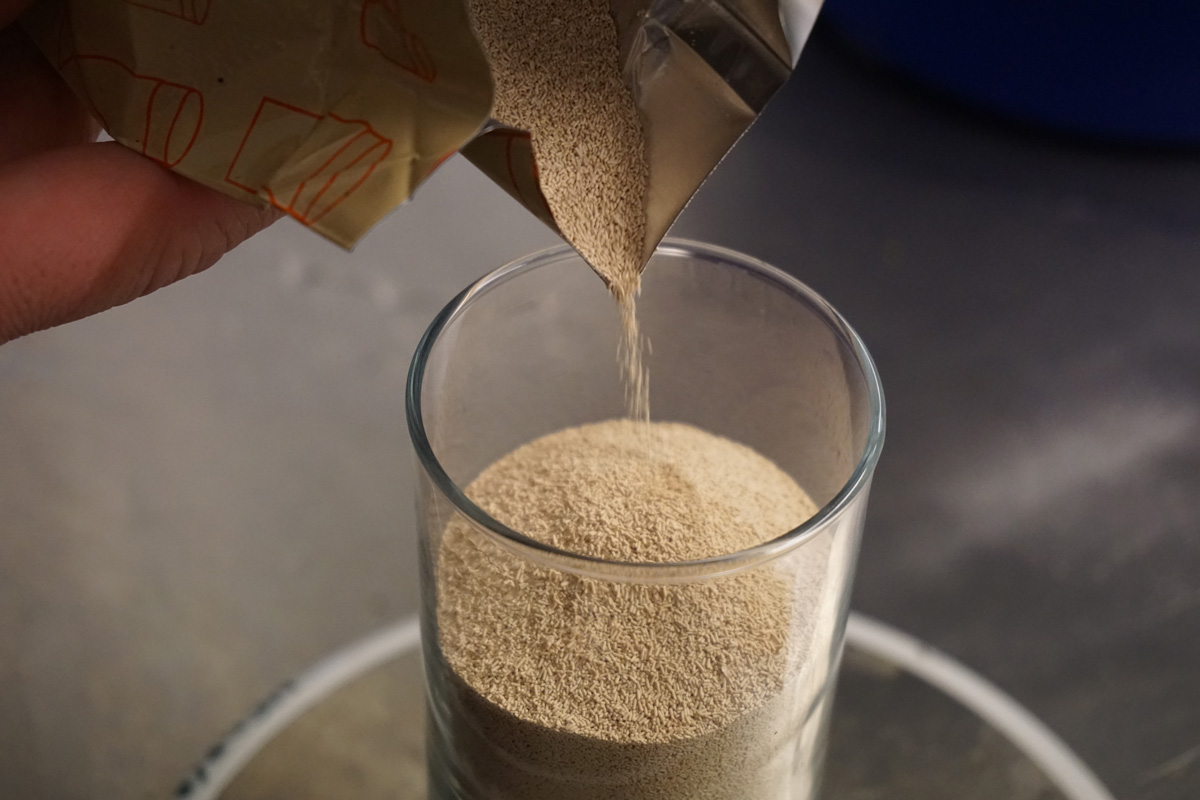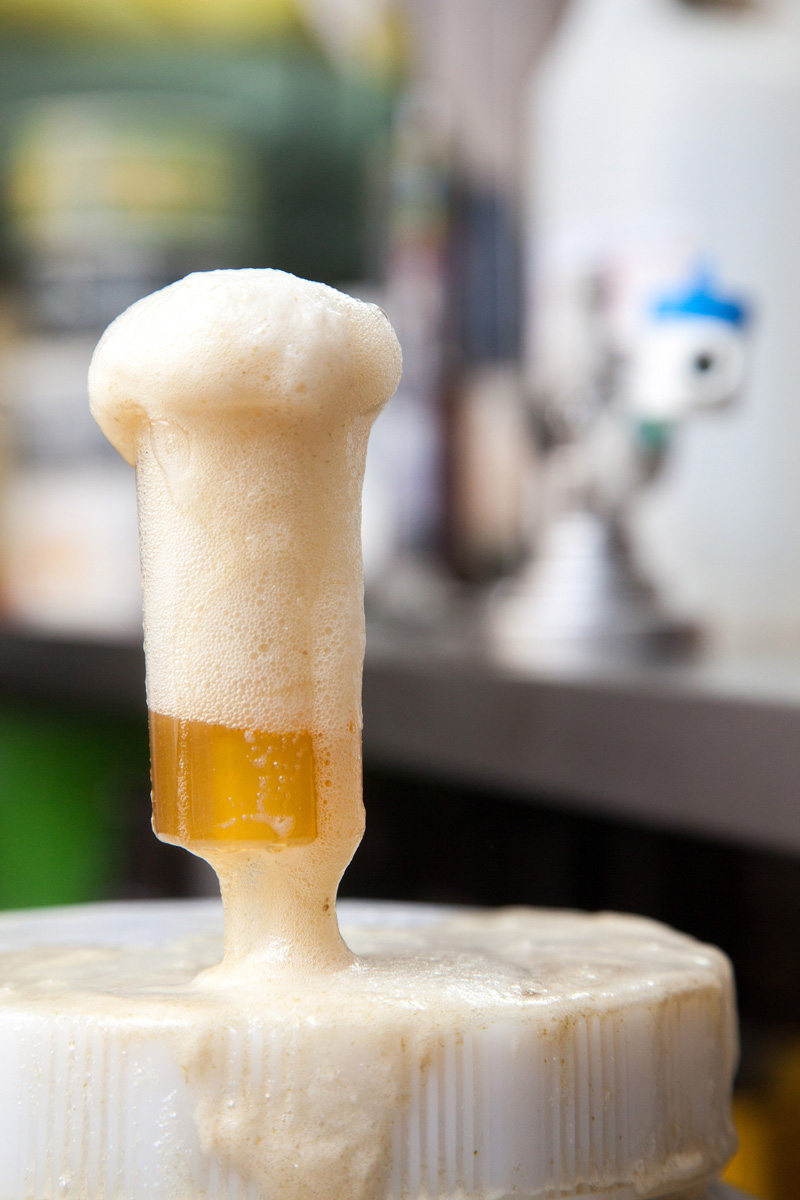The good, the bad and the ugly

We’ve explored the foundational sweetness and roastiness from malt, and the spicy, fruity, or earthy notes from hops, but there’s a quiet, microscopic superstar in beer that wields incredible power: yeast.
These single-celled organisms are the true magicians of fermentation, consuming sugars and transforming them into alcohol, carbon dioxide, and a dazzling array of flavour compounds. Yeast can elevate a brew to heavenly heights, adding complexity and character that makes you sigh with contentment. But just like any magic trick, sometimes things go awry, and yeast can introduce some truly perplexing—and even repulsive—notes.
Ready to uncover the hidden influences of these tiny titans? Let’s dive into the fascinating, sometimes funky, world of yeast-derived flavours.
The Good: Yeast Gems
When yeast is happy and healthy, it contributes desirable flavours that define entire beer styles. These are the yeast contributions that make a beer truly sing.
Fruity Esters: This is where yeast shines in many ale styles. Imagine ripe banana in a German Hefeweizen, juicy red apple or pear in a British ale, or subtle berries in certain Belgian brews. These fruity notes come from esters, byproducts of fermentation dependent on yeast strain and temperature. They add delightful complexity, inviting you back for more.
Spicy Phenols: Ever had a beer that tastes like clove, nutmeg, or black pepper? You’re likely experiencing phenols produced by specific yeast strains, common in German wheat beers and many Belgian ales. These phenolic compounds add a distinct, spicy, sometimes smoky character essential to the style, offering a warming, intriguing counterpoint to malt sweetness.
Bready/Yeasty Notes: In unfiltered, fresh beers, you might detect pleasant doughy, biscuity, or fresh bread flavour. This is the wholesome presence of yeast itself, contributing subtle earthiness and a sense of natural goodness. It’s a comforting note reminding you of the beer’s living nature, often adding a soft, wholesome texture.
Earthy/Funky (when intended): Now we’re venturing into niche territory, but a key one for certain styles! Specific wild yeasts and bacteria, like Brettanomyces (often shortened to “Brett”), contribute unique earthy, barnyard, leather, or subtly sour/tart notes that are highly prized in sour, farmhouse, or wild ales. These are not off-flavours here; they are the intentional complexity that makes these beers incredibly distinctive and often sought after by adventurous palates looking for something truly different.

The Bad: Yeast Hiccups
These flavours indicate something went sideways in fermentation, or are generally undesirable. They aren’t ruinous, but can distract from the beer’s true character.
Diacetyl (Butter/Butterscotch): This classic off-flavour gives distinct buttered popcorn, butterscotch candy, or a slick, buttery mouthfeel. It means the yeast didn’t “clean up” sufficiently or beer was packaged too soon. While trace amounts might be acceptable in certain styles, a strong presence is an off-flavour, making beer cloying and heavy.
Acetaldehyde (Green Apple/Pumpkin): This flavour often tastes like green apples or freshly cut pumpkin. It’s an intermediate compound yeast converts to ethanol. If fermentation is rushed, too cold, or yeast stressed, conversion is incomplete. It’s a common sign of a “young” or “under-fermented” beer, lending an unpleasantly sharp, cidery character that can feel raw or unfinished.
Sulfidic (Rotten Egg/Burnt Match): While some sulphur is natural in lagers, a strong smell of rotten eggs or burnt matches signals stressed yeast. It can also indicate bacterial infection, but stressed yeast can kick out these unpleasant, sulphurous compounds, creating an unappetizing aroma. It’s a clear warning sign.
The Ugly: Yeast Horrors
These are truly egregious off-flavours, screaming “drain pour!” They indicate serious problems with the yeast or brewing, making you regret that first sip.
Autolysis (Meaty/Rubber/Soy Sauce): This most dreaded yeast off-flavour occurs when yeast cells die and burst, releasing contents. This leads to unpleasant flavours and aromas like meaty broth, rubber, Marmite, or soy sauce. It typically happens when beer sits on dead yeast too long, especially in warmer conditions. It’s the smell of neglected fermentation, a tell-tale sign of a beer past its prime.
Infection (Unintended Sour/Vinegar/Cheesy): While sourness can be good, unintended sourness is a huge problem. This manifests as harsh vinegar, sharp lemon-like tartness, or a cheesy/goaty smell, usually from rogue bacteria or wild yeasts. These off-flavours completely overwhelm the beer’s intended profile and definitively signal poor sanitation.
Solvent/Nail Polish Remover (Ethyl Acetate): This extremely potent aroma can smell like nail polish remover or strong chemical solvent. It’s often caused by extremely high fermentation temperatures, which stress the yeast into producing an abundance of certain esters that are far too concentrated and volatile. It’s harsh, burning, and unmistakable—a definite sign the yeast was pushed too far.
So, there you have it: the hidden world of yeast and its incredible impact on your pint. From sublime fruity notes to repulsive autolysis, understanding yeast’s role is key to appreciating beer’s vast flavour spectrum. May your yeast always be happy and healthy, leading to only the good, good, good!




